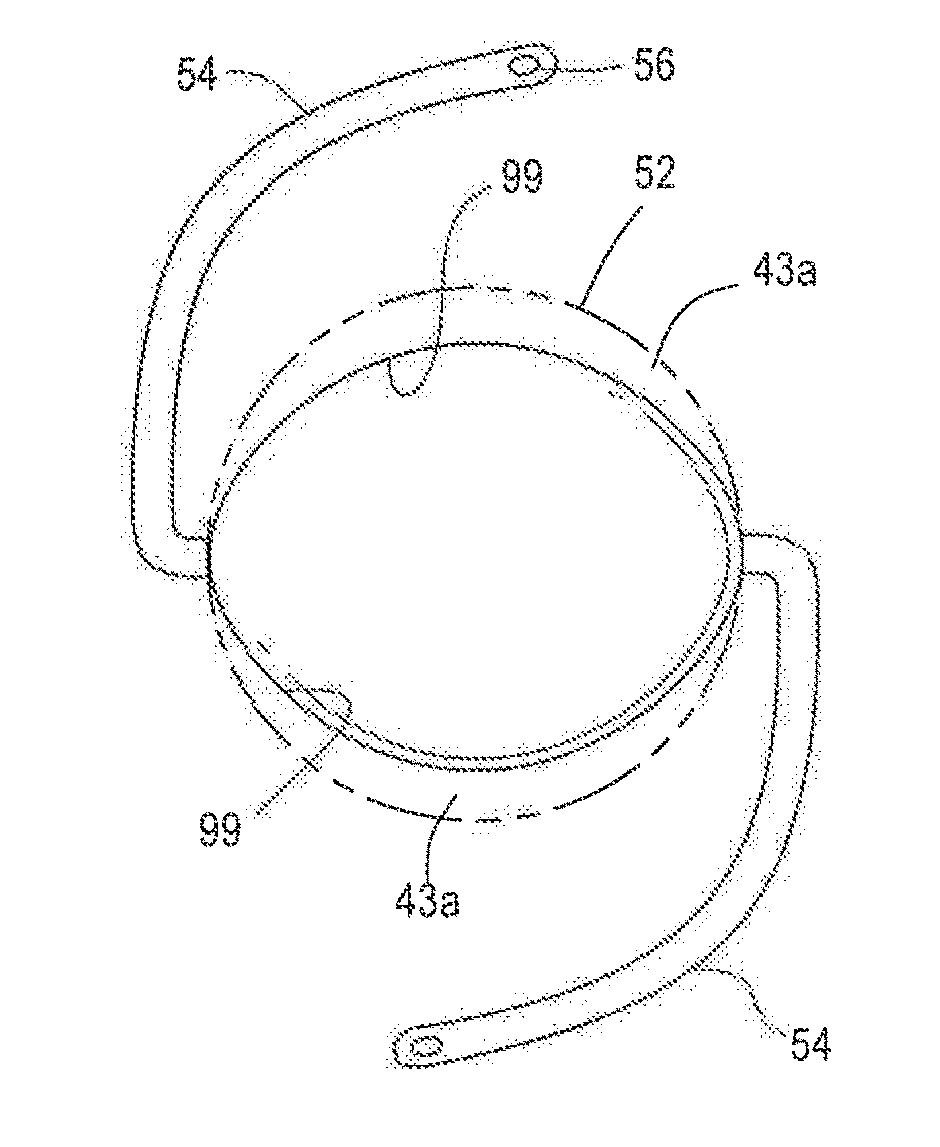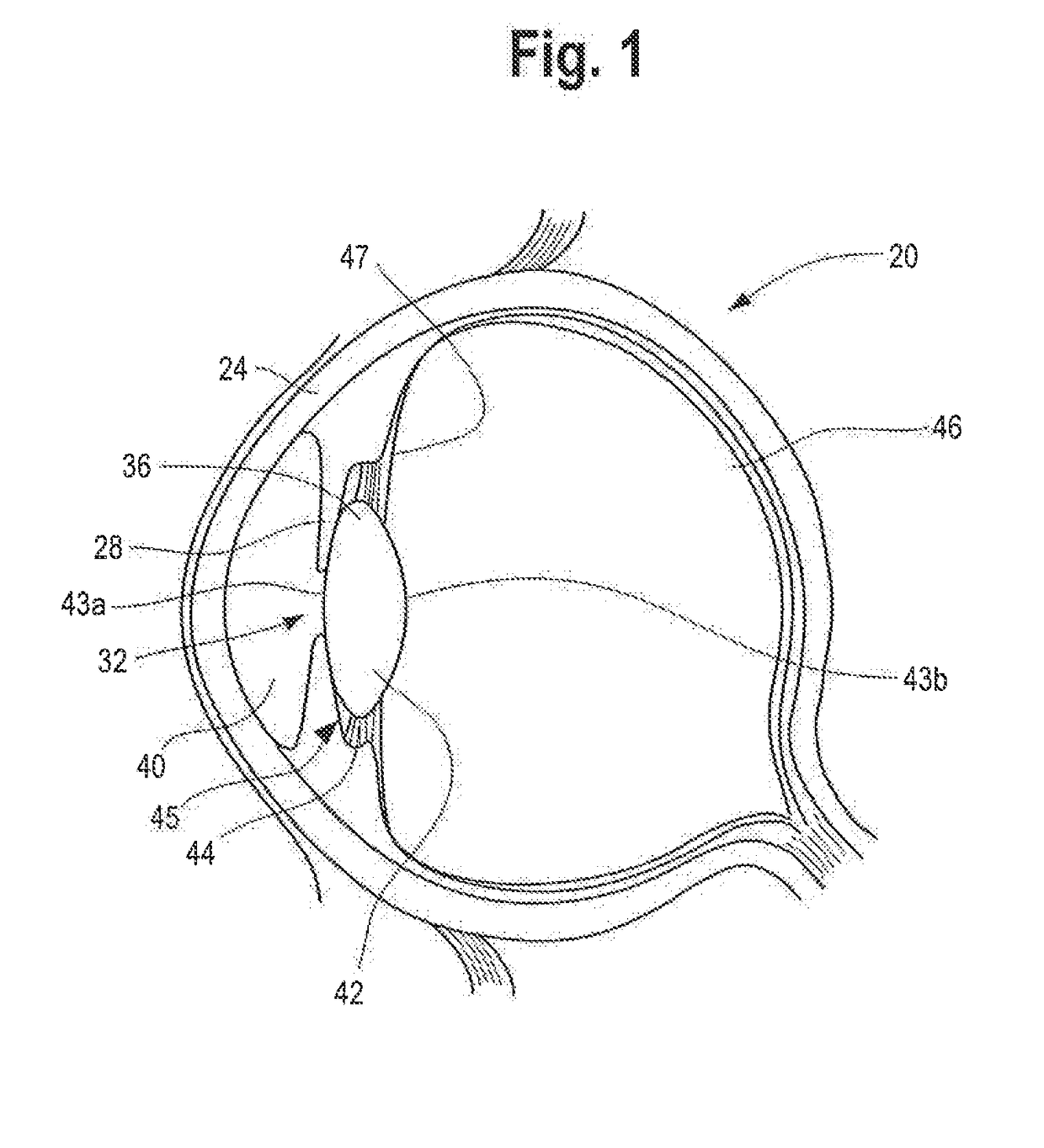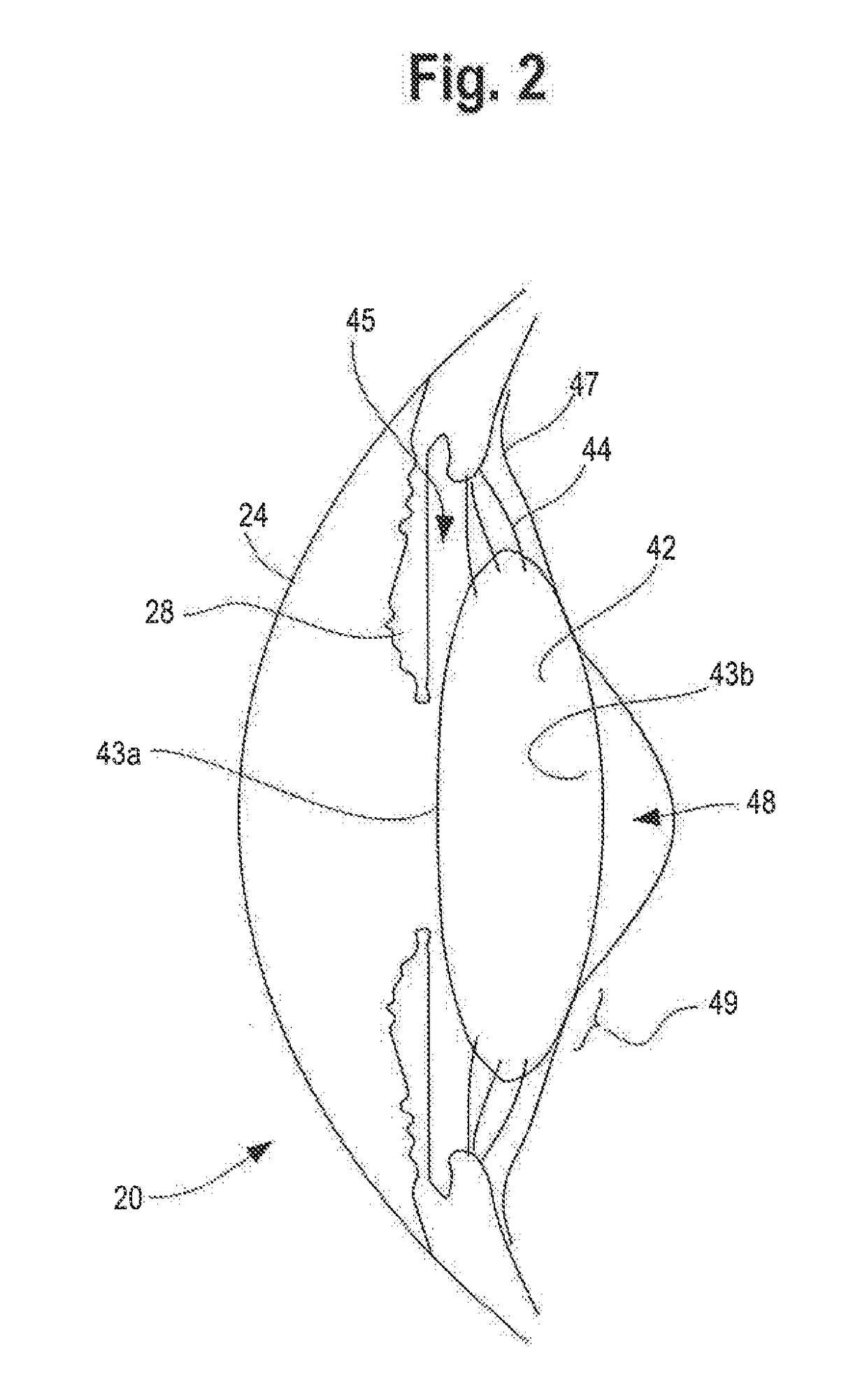Intraocular lens and methods for implanting the same
a technology of intraocular lens and lens, which is applied in the field of ophthalmic surgery, can solve the problems of loss or alteration of patient's focused vision, weakened, deteriorated, etc., and achieve the effect of improving the intraocular lens
- Summary
- Abstract
- Description
- Claims
- Application Information
AI Technical Summary
Benefits of technology
Problems solved by technology
Method used
Image
Examples
Embodiment Construction
[0020]While the present invention is susceptible of embodiment in various forms, there is shown in the drawings and will hereinafter be described a presently preferred embodiment of the invention, with the understanding that the present disclosure is to be considered an exemplification of the invention, and is not intended to limit the invention to the specific embodiment illustrated.
[0021]FIGS. 1 and 2 show a diagrammatic cross-sectional view of the human eye 20. Beginning at the exterior of the eye 20, the eye 20 has a protective outer layer or cornea 24 which retains the fluids or aqueous humor of the eye 20 and which focuses light. Inward of the cornea 24 is the ring-like iris 28 with an aperture or pupil 32 for restricting light reaching the lens 36. The lens 36 defines the posterior extent of the anterior segment 40 of the eye 20, sitting behind the iris 28. The lens 36 is composed of protein encased in a capsular bag 42. Supporting ligaments or zonules 44, composed of 360 deg...
PUM
 Login to View More
Login to View More Abstract
Description
Claims
Application Information
 Login to View More
Login to View More - R&D
- Intellectual Property
- Life Sciences
- Materials
- Tech Scout
- Unparalleled Data Quality
- Higher Quality Content
- 60% Fewer Hallucinations
Browse by: Latest US Patents, China's latest patents, Technical Efficacy Thesaurus, Application Domain, Technology Topic, Popular Technical Reports.
© 2025 PatSnap. All rights reserved.Legal|Privacy policy|Modern Slavery Act Transparency Statement|Sitemap|About US| Contact US: help@patsnap.com



